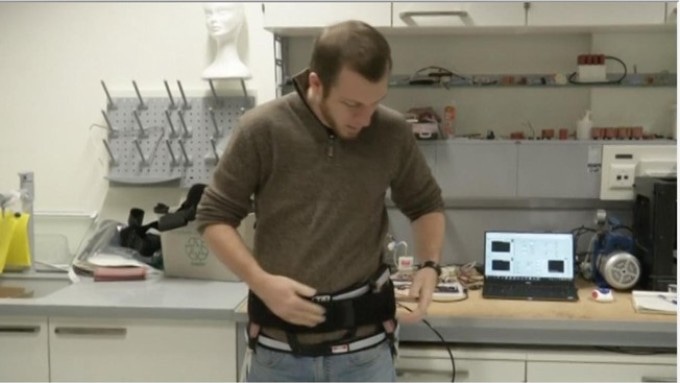Oct 16 2017
Roboticists in Switzerland have developed robots with muscle-like actuators made of silicone rubber elastomers.
 © 2017 EPFL
© 2017 EPFL
The research team from the École Polytechnique Fédérale de Lausanne (EPFL) is creating soft, flexible and reconfigurable robots using the actuators. These would be used on the body of people suffering from impaired movement to help them move about more easily.
These types of malleable, air-actuated, materials could potentially be used in powered exosuits or exoskeletons, switching rigid materials most frequently utilized.
If you only deal with rigid materials or heavy metal materials, you can imagine having something like that tight against your body, it doesn't really give or take if you push against it too far. With these materials you can push without hurting yourself in the process. If it applies the force in the wrong direction then you don't cause any unwanted injury.
Matthew Robertson, Researcher
The 'robots' are regulated by altering the air pressure in specifically designed 'soft balloons', which work as the robot's body.
When the pressurized air fills each balloon, it inflates in the direction necessary. As a modular system, it can be adjusted around the body to where physical support is desirable.
As part of their research, the team has created a belt composed of many inflatable components for possible use on stroke patients, holding them erect during rehabilitation exercises and controlling their movements.
For physical therapy and rehabilitation the belt acts as a wearable therapist, in a sense, to guide you through some exercises to help strengthen your upper body. Stroke patients often have asymmetry where they lean towards one side and it could be used to correct that asymmetry. If you're using it to restore gait, the belt could do the job of providing the support for your upper body.
Matthew Robertson, Researcher
The belt's soft actuators have pink rubber and transparent fishing line. The placement of the latter guides the modules' deformation exactly when air is injected. Presently the belt is hooked up to a system of external pumps, but Robertson envisions it could soon become miniaturized and positioned directly on the belt.
A predictive model developed by Researcher Gunjan Agarwal can be used to cautiously control the mechanical behavior of the robots' numerous modules. Her research has just been published in Nature - Scientific Reports.
Director of EPFL's Reconfigurable Robotics Lab (RRL), Jamie Paik, said soft silicones were a perfect material for such products.
Soft silicones allow us to address the difficulties when we cannot address active degrees of freedom on rigid robots. Instead of controlling them, because of the material characteristics they move as they are intended to.
Jamie Paik, Director, Reconfigurable Robotics Lab (RRL), EPFL
The potential for soft actuators does not rest exclusively with the infirm. Adaptable robots capable of steering through cramped and hostile environment could be built. On a more rudimentary level, they could be used by people who suffer lower back pain.
According to Paik, "we can foresee a new type of technology being brought closer to our daily lives. When I say that, it's not us trying to bring in Terminator into everyone's home, but to bring in different types of technology that enable us to live healthier and with more comfort."
Paik believes that since the material and manufacturing process can be scaled, the cost will be comparatively low.
In a separate RRL project, using similar silicone material, pulsating actuator skin that offers haptic feedback to the user has been created by Researcher Harshal Sonar. This pneumatic silicone skin has incorporated electric sensors whose frequencies can be regulated by the user.
"We can use this kind of feedback for creating augmentary feedback for people who are suffering from stroke or paraplegia, so that they have information about something else happening on their wearable exoskeleton to the body parts where they have feelings," said Sonar. "The information can be incorporated in terms of the variation of frequency or amplitude, like a traveling wave. Apart from that we can generate a wearable glove for virtual reality platform, so that when you wear it you can not only hear or see whatever is happening in front of you, but you can actually feel them."
Several electronics companies are keen to find ways to handle the issue of an ageing population. In 2014, Panasonic exhibited its robot machine that can lift people up, via an attached vest worn by the user. The RRL team thinks its technology will offer the elderly more independence than such products.